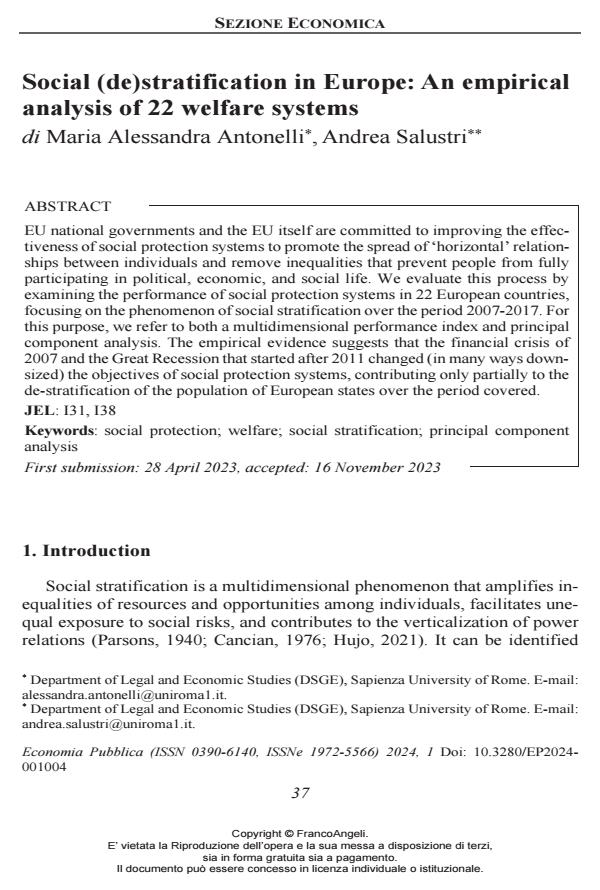Social (de)stratification in Europe: An empirical analysis of 22 welfare systems
Titolo Rivista ECONOMIA PUBBLICA
Autori/Curatori Maria Alessandra Antonelli, Andrea Salustri
Anno di pubblicazione 2024 Fascicolo 2024/1
Lingua Inglese Numero pagine 28 P. 37-64 Dimensione file 433 KB
DOI 10.3280/EP2024-001004
Il DOI è il codice a barre della proprietà intellettuale: per saperne di più
clicca qui
Qui sotto puoi vedere in anteprima la prima pagina di questo articolo.
Se questo articolo ti interessa, lo puoi acquistare (e scaricare in formato pdf) seguendo le facili indicazioni per acquistare il download credit. Acquista Download Credits per scaricare questo Articolo in formato PDF

FrancoAngeli è membro della Publishers International Linking Association, Inc (PILA)associazione indipendente e non profit per facilitare (attraverso i servizi tecnologici implementati da CrossRef.org) l’accesso degli studiosi ai contenuti digitali nelle pubblicazioni professionali e scientifiche
EU national governments and the EU itself are committed to improving the ef-fectiveness of social protection systems to promote the spread of ‘horizontal’ relationships between individuals and remove inequalities that prevent people from fully participating in political, economic, and social life. We evaluate this process by examining the performance of social protection systems in 22 Euro-pean countries, focusing on the phenomenon of social stratification over the pe-riod 2007-2017. For this purpose, we refer to both a multidimensional perfor-mance index and principal component analysis. The empirical evidence suggests that the financial crisis of 2007 and the Great Recession that started after 2011 changed (in many ways downsized) the objectives of social protection systems, contributing only partially to the de-stratification of the population of European states over the period covered.
Parole chiave:social protection; welfare; social stratification; principal component analysis
Jel codes:I31, I38
Maria Alessandra Antonelli, Andrea Salustri, Social (de)stratification in Europe: An empirical analysis of 22 welfare systems in "ECONOMIA PUBBLICA " 1/2024, pp 37-64, DOI: 10.3280/EP2024-001004